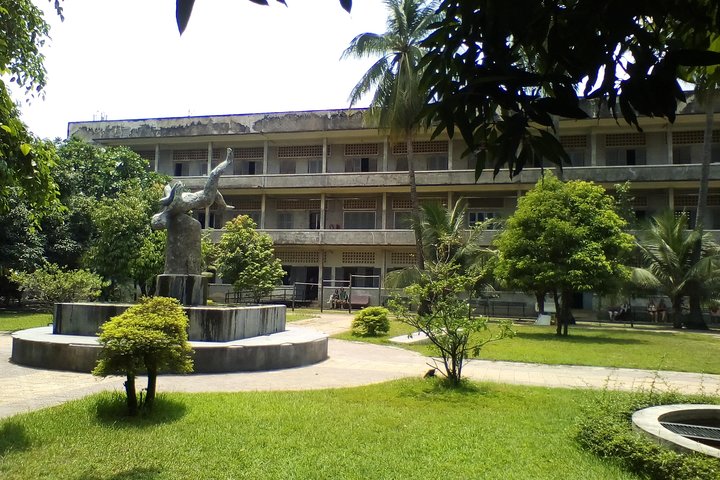Exploring Cambodia’s Past: A Reflective Tour of S21 and the Killing Fields
Embark on a journey through Cambodia’s poignant history with the Killing Field & S21 Tour in Phnom Penh. Discover the depths of the Khmer Rouge era with an insightful guide, and explore the cultural nuances of Cambodian traditions.
A Journey Through History: The Tuol Sleng Genocide Museum
As I embarked on the Killing Field & S21 Tour, I was filled with a sense of solemn anticipation. The history of Cambodia during the Khmer Rouge regime is a poignant chapter that demands reflection and understanding. Our guide, Sony, was a beacon of knowledge, providing us with a comprehensive history lesson on the political landscape of that era as we made our way to the Tuol Sleng Genocide Museum.
Upon arrival, the gravity of the site was palpable. Once a high school, Tuol Sleng was transformed into a center of interrogation and torture. Sony’s detailed explanations of why the museum was preserved in its original state and the significance of its location added layers of depth to our visit. Walking through the rooms, each filled with haunting photographs of victims, I was reminded of the importance of preserving history to honor those who suffered and to educate future generations.
The experience was both humbling and enlightening. Sony’s ability to convey the historical context with sensitivity and respect made the visit profoundly impactful. As we left the museum, the car awaited us with cold water, a small but thoughtful gesture that provided comfort as we prepared for the next leg of our journey.
The Choeung Ek Killing Fields: A Place of Reflection
The drive to the Choeung Ek Killing Fields was a time for contemplation. Sony continued to share his wealth of knowledge, answering our questions and providing specific historical details about the site. Choeung Ek, once an orchard and a Chinese cemetery, became a site of brutal executions during the Khmer Rouge regime. The transformation of such a peaceful place into a scene of horror is a stark reminder of the atrocities that occurred.
Upon arrival, we were shown a short film about the history of the killing fields. While informative, Sony’s insights and personal anecdotes enriched the experience far beyond what the film could convey. Walking through the fields, Sony guided us through the different areas, each with its own story to tell. The memorial stupa, filled with the skulls of victims, stands as a somber tribute to those who lost their lives.
The tranquility of the site today contrasts sharply with its violent past, offering a space for reflection and remembrance. Sony’s guidance throughout the tour ensured that we left with a deeper understanding of the events that transpired and the resilience of the Cambodian people.
Cultural Insights and New Year Traditions
As we made our way back to the hotel, the conversation shifted to lighter topics. Sony shared insights into Cambodian New Year traditions, a subject close to my heart given my own multicultural background. Having experienced New Year celebrations in Siem Reap before the pandemic, I was eager to learn more about the customs and festivities unique to Phnom Penh.
Sony’s descriptions painted a vivid picture of the celebrations, from traditional games to the vibrant street parties. His ability to provide a realistic view of the cultural nuances was invaluable, offering a glimpse into the rich tapestry of Cambodian traditions.
Reflecting on the day’s journey, I was grateful for the opportunity to learn from someone as knowledgeable and passionate as Sony. The Killing Field & S21 Tour was more than just a tour; it was an immersive experience that deepened my understanding of Cambodia’s history and culture. As I continue my travels through Asia, I am reminded of the importance of mindful exploration and the power of storytelling in preserving the past.







































